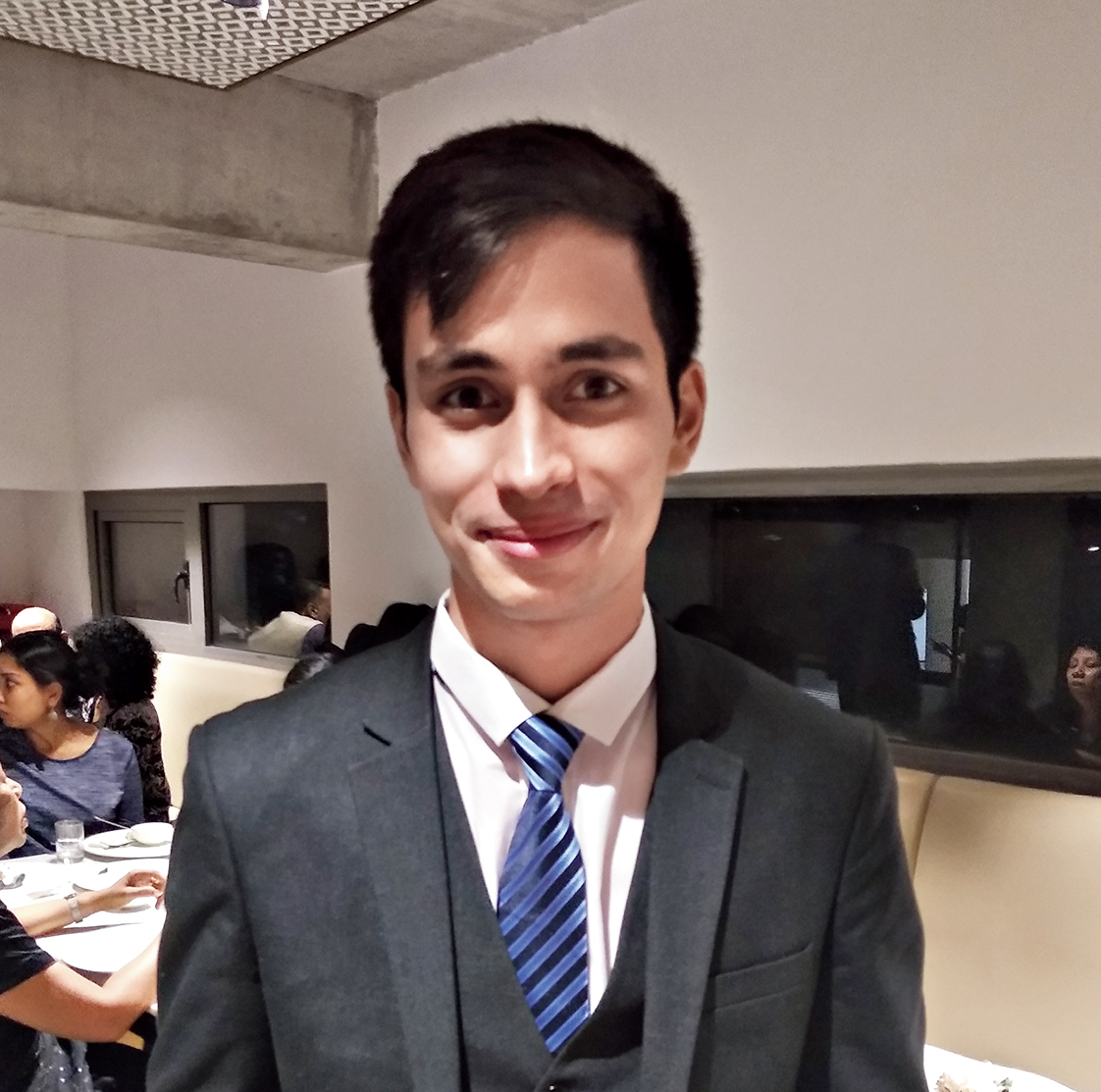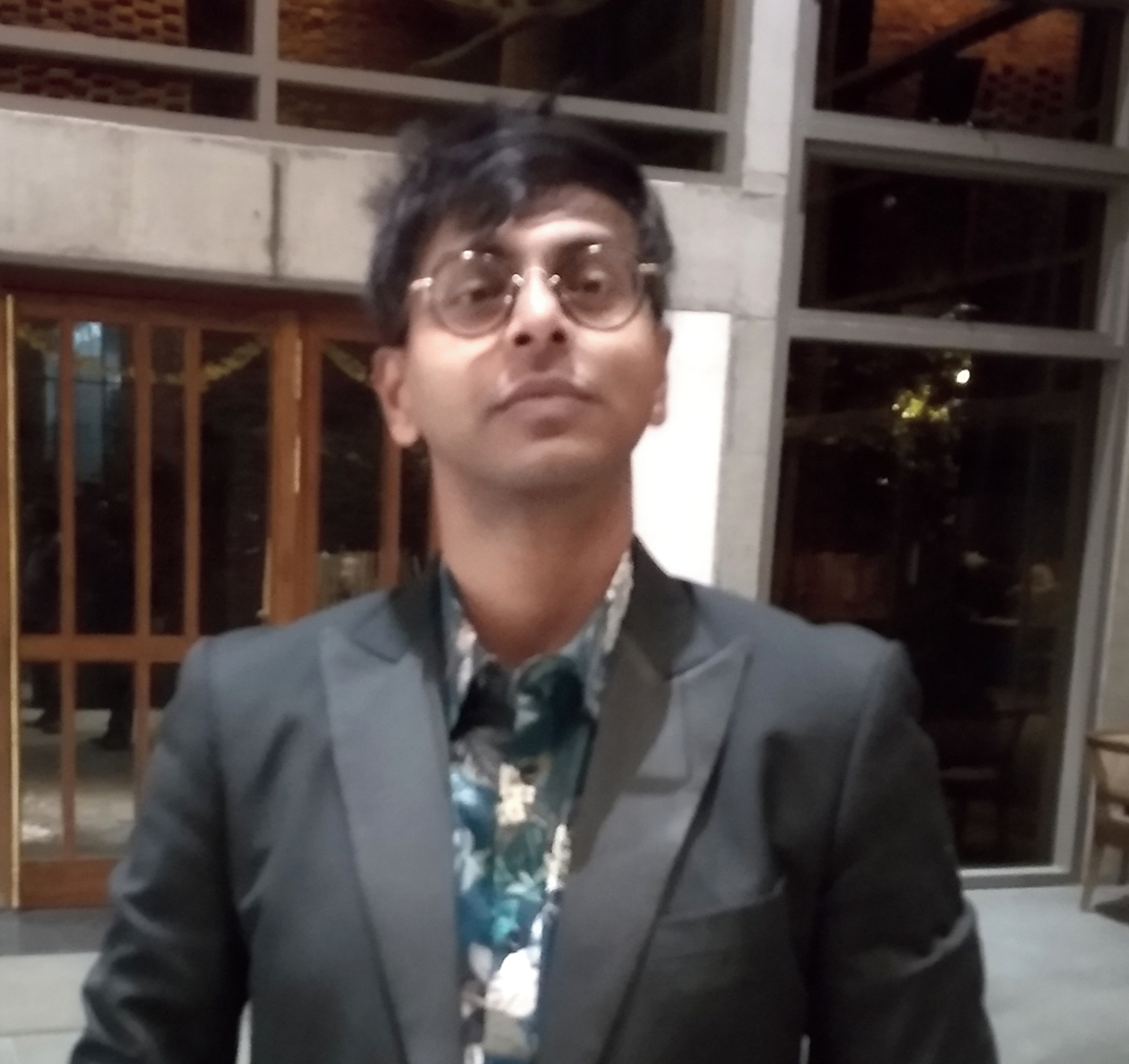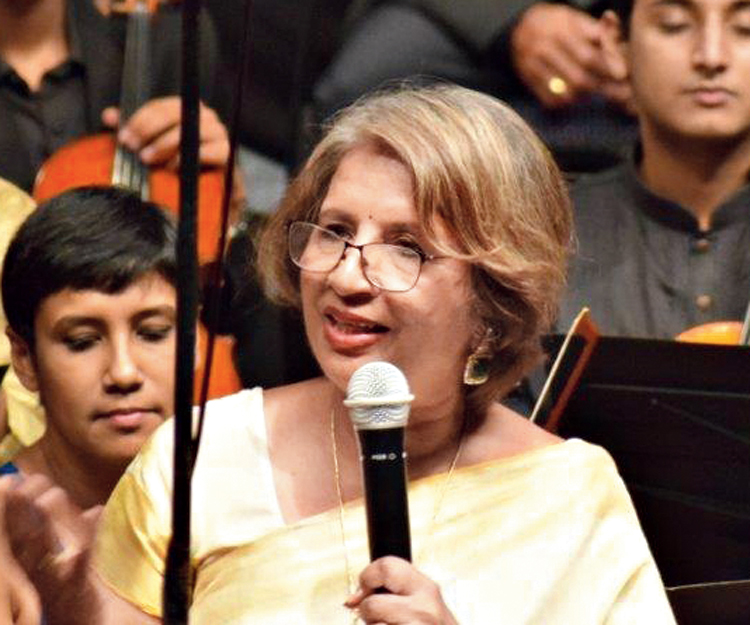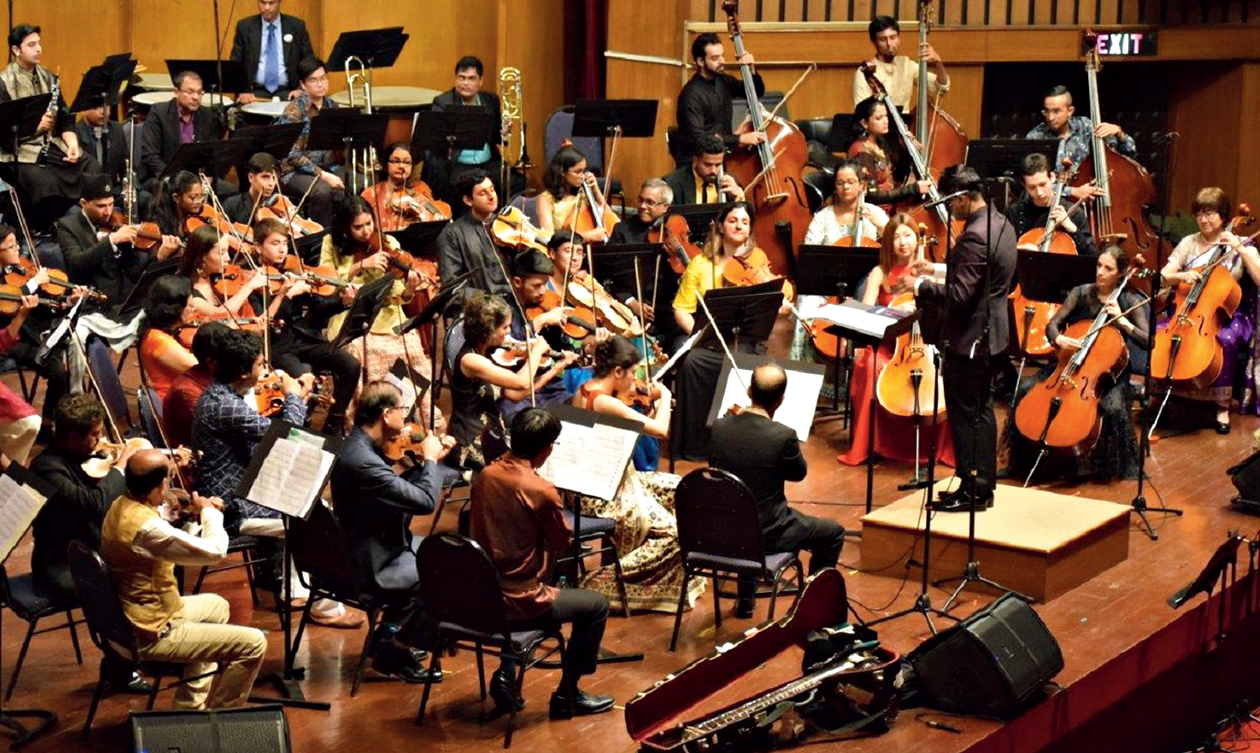
Arson Fahim from Afghanistan
You could term it musical diplomacy at its most pragmatic, and prolific too, as the South Asian Symphony Orchestra presented a concert last month at the J.N. Tata auditorium at the Indian Institute of Science in Bangalore, with musicians forming a holistic connect for a “region” that is Asia, but actually exists in a “polyharmonic geography” as its founder-trustee Nirupama Rao, our former foreign secretary and former ambassador to USA and China, put it.
Their music melted territorial barriers, and in the process melded into a harmonic peace concert, which was titled ‘From Gandhi to Beethoven — the Call to Freedom’. The concert — in celebration of 150 years of Mahatma Gandhi’s birth anniversary; the presentation — an eclectically curated programme that gave the purists their favourite Beethoven concertos, but also knitted into its repertoire original compositions, and regionally popular tunes, many of these numbers raga-based, to create a euphonious whole. A full-fledged orchestra of 65 musicians, representing India, Afghanistan, Nepal, Sri Lanka, Singapore, Thailand, Kazakhstan, the United States, the UK and Germany... with the full complement of violins, violas, cellos, basses, flutes, oboes, clarinets, bassoons, horns, trumpets, trombones and percussion.
What is different about the South Asian Symphony Orchestra? Before I go on to elaborate on the grand concert itself, a little backgrounder of the mission of the South Asian Symphony Foundation is necessary. It states: “To connect India more closely with South Asia — a shared civilisational and geographical space.” It further goes on to state that while opening avenues for public diplomacy, the South Asian Symphony Orchestra is “designed to promote peace building in the region: an Indian creation with a heart that is South Asian”.
“The creation of musical repertoire for orchestral performance based on the folk, classical and popular music of the region is also an important focus of these efforts. Musicians from India and fellow South Asian countries are thus able to craft a shared musical identity of the subcontinent of South Asia that is rich, composite, and yet plural,” was how Nirupama Rao explained the whole idea and ideal, emphasising that it is “helping the rest of the world to view the region in a new light”.

Alvin Arumugam from Singapore
Why this emphasis on peace?
In an interactive session and a mini-concert of selections from Rossini and Gluck, which I attended a day prior to the concert, you could see the diversity in a microcosm, listen to the pain of some of the musicians and understand how the political tensions, the conflicts in the South Asian region, a large modicum of insularity have spurred on the whole idea of creating a movement like the South Asian Symphony Foundation . The larger goal: of developing a “humanitarian agenda for the region, built on closer people-to-people ties and citizen-driven cultural diplomacy”.
The founder-trustee of the South Asian Symphony Foundation, Nirupama Rao, who has birthed the whole movement, along with her husband, Sudhakar Rao, former chief secretary, Karnataka, led the discussions. The live discussion was anchored by Rao in conversation with a young, dynamic conductor Alvin Arumugam from Singapore and a young pianist from Afghanistan, Arson Fahim, growing up amidst turbulence, and now a conductor of the Afghan National Symphony Orchestra. She talked appassionato about how music could be an enabler to bring people together, and the fact that South Asia is a region ruled by its commonality. In fact, the Foundation has expanded the definition of South Asia to include the diaspora of South Asian origin from around the world.
Alvin, who conducts two sets of orchestras, on his first visit to Bangalore, endorsed what diplomat Rao had said about the importance of counterpoint ultimately resulting in harmony. Arson expanded on how they have had to overcome the fundamentalists trying to silence their music, including that of an all-women orchestral set up called Zohra in Afghanistan.


Musicians from India and fellow South Asian countries are able to craft a shared musical identity of the subcontinent of South Asia that is rich, composite, and yet plural
— Nirupama Rao, founder-trustee of the South Asian Symphony Foundation
The music flows
Musicians and aficionados from many countries were present for a sort of prelude to the major concert, and one had a chance to get up close and personal with some of them about their musical bearings. There was 13-year-old Alisena Hotak, flautist Meera Gudipati, who is musician 1st class in the US Coast Guard (who played in uniform on the day of the concert), cellist Kenzhegul Akshekina from Kazakhstan, who leads the field at the Trivandrum Academy of Western Music; Nourhe Khate from Nagaland who started to learn from age eight; Saranga Cooray from Sri Lanka, and a chartered engineer Neranjan de Silva from Sri Lanka to whom I am grateful for many of the pictures here, all of whom had already forged deep friendships, some of the older ones actually turning to the younger lot for “guidance”. All of them diverse, but consonant in their commitment.
This harmonious and melodic mix could be found in the Peace Concert last month. The national anthem rendered by such a diverse group was itself significant of the long-term cooperation that is sought. The mood was then set with the invocation — Vaishnava Janato in a single voice by Rohan Ramanan, an Indian American trained in Hindustani classical music and an oboist to boot. A Harmony Children’s Chorus produced a euphony that uplifted the entire congregation with, amongst other offerings, Abide with Me and Ekla cholo re. The Harmony Chorus has a vast repertoire, some of them having performed at Carnegie Hall, and through many of their concerts have raised funds for old-age homes and orphanages. And then there was ‘Hamsafar — a Musical Journey through South Asia’, put together by Lauren Braithwaite, which was a tapestry of traditional and popular musical works from seven countries in the region.
From the melancholic Aiyandiye of Sri Lankan origin, to Allah megh de pani de, to music from Nepal and Afghanistan going into the peppy Mera joota hai Japani, and ending with Lal meri pat rakhiyo, words of which were penned by Amir Khusrow in honour of the Sufi saint Lal Shahbaz Qalandar. Much of it recognisably evocative.
Recognisable and pertinent, also for those present, waiting for their share of Western classical was the Piano Concerto No 4 in G Major, with Julian Clef from Kerala at the piano, and the ever popular Symphony No 5 in C Minor, providing a rousing finish to the evening. Sandwiched in between the Beethoven pieces, both played with astonishing aplomb, was another gem — a Musical Tribute to Mahatma Gandhi by 26-year-old Anand Antonius Nazareth, with some of Gandhiji’s favourities finding their way into this piece of music. His is a fascinating background — born in Verona, Italy, to a family of musicians, his father a symphonic conductor and mother a trained singer. He himself has been composing music in New York.
Bringing the curtains down on this eclectic concert was an encore that brought the best of our old film numbers into a dramatic fusion. Maintaining a delicate balance between youth renderings, invocation, and classical, it was a mellifluous whole, so concordant, so complete.











